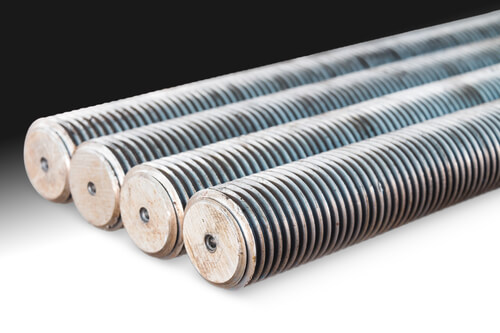When inspecting threaded shafts and holes, thread gages are a highly common application tool. But, should you use ring gages or plug gages? Generally speaking, threaded holes of manufactured parts are checked by plug gages. Ring gages, however, can check fastener diameter, dowel diameter, and shaft. It’s not particularly common, but it is important.
But what about checking non-threaded parts? Here, smooth ring gages can be put to good use. What other kinds of gages can be used?
Ring Gages
When assessing the attributes or specified dimensional tolerances of threaded studs, shafts, or pins, ring gages are employed. Ring gages are used in a wide variety of industries for calibrating and checking as well as comparative gaging. Other industries where ring gages are found are gas and oil exploration, automotive, machine tool, and other metal working applications.
Threaded Ring Gages – No-Go Thread
This particular ring gage is used to determine if a workpiece external thread’s actual pitch diameter falls below the smallest prescribed size. Not tested here are the external thread minor and major diameters. With the no-go thread ring gage:
- The thread profile has a truncated crest
- It has a minimum thread length of three threads
- Should not, by hand, for more than two threads (minus force) be able to be screwed into the thread of the workpiece
- With a wear check plug, it must be monitored regularly
Threaded Ring Gages – Go Thread
As opposed to no-go threaded ring gages, and (as applied to screw-on and external threat capability) frequently referred to as “mating size”, are go thread ring gage checks. These check a number of things including the following:
- Whether or not a straight flank piece is long enough
- An external thread pitch diameter’s largest dimension (this can include particular thread form deviations)
Not checked by go with thread ring gages, however, are the following:
- The major diameter
- The root curve
Without force, this gage must be able to be, by hand, screwed along the workpiece’s full length.
Note: Be sure to check your gage with a wear check plug gage at regular intervals because it is subject to greater wear.
External Thread Major Diameters – Smooth Ring Gages
For checking thread major diameters, there are no-go ring gages and smooth go ring gages. After the thread has been completed, inspection is required because, through thread cutting, major diameter can change. Generally speaking, before gaging the external thread pitch diameter, a check of the external thread major diameter should be completed.
Without any force, along the entire thread length, it should be possible to push the smooth go ring gage for the external thread major diameter. For the smooth no-go ring gage, it must be possible to push it over the workpiece, for the external thread major diameter, by more than 2 x P (two pitches) from the thread’s start.
Non-Threaded Shafts – Smooth Ring Gages
Whether a shaft has fallen below the minimum shaft dimension prescribed can be checked by the smooth no-go ring gage. Without any force, the pairing of a smooth no-go ring gage with the shaft must be possible.
Particularly for components that are easily deformed, there are no-go ring gages and smooth go ring gages for gaging shaft diameters. Including cylindricity and concentricity, the maximum shaft dimension is checked by a smooth gold ring gage. Without using force, by hand, the cylindrical, smooth go ring gage must be able to be paired with the shaft.
When it comes to thread gages, look no further than Willrich Precision Instruments for high quality instruments used in the field of gaging and metrology. Contact us today if you like to learn more.





